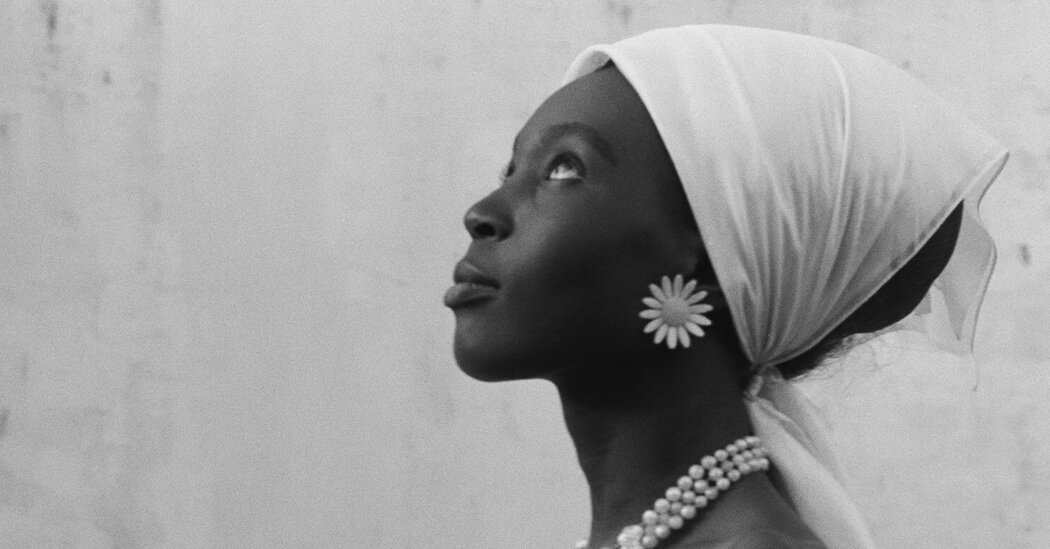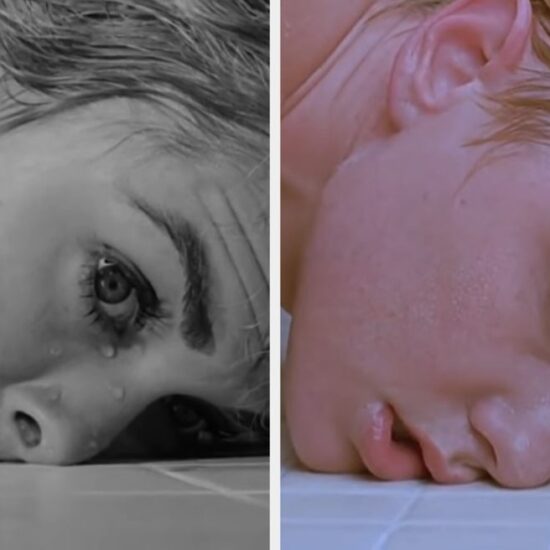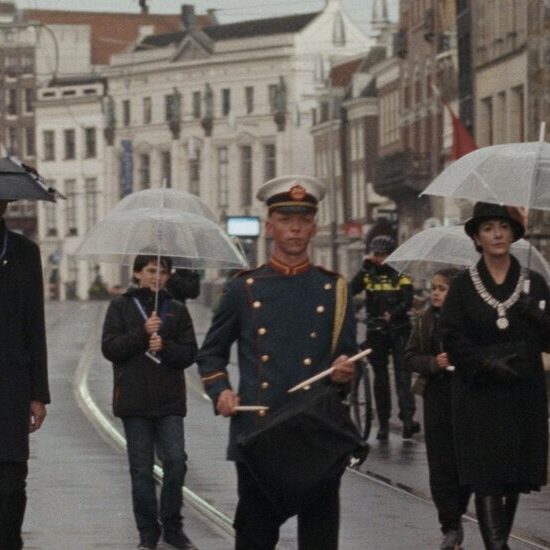
A princess ascends from the water like a siren. The stony gaze of an African mask lures a beautiful maid homeward. The Senegalese filmmaker Ousmane Sembène rendered myth a visual map that rescued the African past from the sullying grasp of empire. In place of demigods and antiheroes, women were his preferred orbit.
The director revealed his enduring preoccupations in the Sembènian heroine: Broadly speaking, she was principled, defiant, inclined to revolt, however outwardly hopeless her odds appeared. Where colonial literature either struggled to translate the finer contours of traditional African gender arrangements or offered only a cursory sketch of their subjection, Sembène stayed attuned to the shades of women’s displacement. He understood, for instance, in “Xala” (1975) how a woman who was too imperious to enter the house of her husband’s second wife could bear, in somber silence, when he took a third, even younger bride, and fractured further what little love was left to her, his first and eldest wife.
Feminine multiplicity animated Sembène’s (literary and cinematic) corpus, and he took the cost of his characters’ bravery seriously. Their triumphs come hard-won or not at all. They frequently become the cherished apotheosis of liberation or, where denied by earthly circumstance, rebellion. The director nursed an abiding suspicion of all religion, but his films betray him: If he surrendered in faith to anything, it was the African woman.
On the occasion of the director’s centennial, Film Forum is hosting a two-week retrospective commemorating Sembène’s work, including the short film “Borom Sarret” (1963), one of the earliest narrative films made in sub-Saharan Africa, a feat that later crowned him the “father of African cinema.” No reading of Sembène (who died in 2007 at 84) is complete without understanding that he considered himself among the griots, a venerable caste of West African storytellers charged with preserving oral tradition. The formal brushstrokes of his compositions contain traces of his tutelage in Moscow, but the Indigenous orality to which he was heir defined his social-realist fables: peopled with all of folklore’s classical archetypes — the trickster, the headstrong princess, the jealous (possibly vengeful) wife — and designed in the shadow of its didactic architecture, replete with curses, the gluttonous elite and resourceful outcasts.
For much of the director’s youth, French law prevented Africans from filming in Africa. If the imperial project is, fundamentally, erasure, to interrupt and rewrite history, we see how authorship emerges paramount. Sembène, therefore, regarded the griot as a historian. His early short “Niaye” (1964), about a young village girl impregnated by her father, a chief, would herald persisting themes: A voice-over declares the griots the “only memory of this country” and laments, “Our country is dying of lies and false morality.”
Sembène began as a novelist, after he taught himself to read and write in French (many of his films are adapted from his novels and short stories). But the written word, too, inevitably proved an awkward province for his activism; literacy came enveloped in colonial intrusion. Cinema proposed to reconcile the tension among language, text and orality, a conflict he restages in “Black Girl” (1966), his debut feature and perhaps best known work.
He was first compelled to recount the tragedy of Diouana (played by Mbissine Thérèse Diop) after he stumbled across a startling report about a Black maid in a French newspaper. He published “Black Girl” as a short story in 1962, two years after Senegal seized independence. Here, the ingénue becomes a doomed emissary of a long invaded nation, still bound psychically and economically to its interlopers.
Diouana abandons her village in Dakar, possessed of quixotic visions of France, where she ventures to work as a nanny for a well-to-do white family. But the fantasy crumbles upon her arrival when the nameless “Madame” thrusts Diouana into the role of housekeeper. Confined to the cramped house, she toils away daily at domestic chores, overworked and mistreated by her employer. In flashbacks, we encounter a different Diouana: spirited, glamorous and, as it happens, perilously myopic.
But the most telling sequence occurs when Diouana receives a letter from her mother (perhaps penned by the village schoolmaster, played by Sembène himself). Diouana listens wordlessly as her employers read the letter. They offer to transcribe her response, lies, of course, about her “good health.” But more important, their translation amounts to a symbolic personal (and political) violation; history disrupted, vocal theft. In protest, Diouana reclaims all she has left: her body.
If women model the zeniths of revolutionary vitality, it was men, in Sembène’s estimation, who were generally useless. “Xala” dispenses a scalding indictment of Senegal’s government after the nominal expulsion of the white colonists. On his third wedding night, El-Hadji (Thierno Leye), a wealthy member of the country’s ruling class, finds himself afflicted with xala, the curse of impotence. He dismisses the obvious displeasure of his first two wives, both too traditionalist and dependent upon him for any objection to land meaningfully. Only his daughter Rama (Myriam Niang), the same age as his new wife, can truly kindle his rage, for she alone represents the noble independence El-Hadji superficially performs. He dons suits and drinks imported water; she refuses the water and his language. In a testament to their alliances, El-Hadji snaps at Rama, “Why do you always answer in Wolof when I speak to you in French?”
In “Emitaï” (1971) — named for the Diola god of thunder — the French army absconds with the village’s young men and demands, too, their rice (a sacred crop) to feed soldiers. While the elders exhort their gods, the women hide the harvest, which they cultivate themselves. Sembène revels in these glimpses of communal ceremony through protracted sequences: a line of women, heads crowned with baskets of rice, maps the winding path from the wetlands home; elsewhere, they bend over, splashing the delicate stalks with fistfuls of river water. For the women’s insolence, the French platoon holds them captive, their silent demonstration dappled in blazing sunlight.
But powerful men seem especially susceptible to colonial imposition. In “Ceddo” (1977), amid the triad of Islam, Christianity and the slave trade, the ceddo (nonbelievers) kidnap the princess to ensure the king’s allegiance to their freedom. But the king, flanked by a menacing, ambitious imam and his disciples, realizes too late that any dominion he once held has been usurped, if not foolishly delivered, to these outsiders with their foreign gods. It seems the leadership of men fails to challenge empire efficiently because they pursue some approximation of its power. No wonder that Sembène’s films routinely faced censorship; “Ceddo” and “Emitaï” were both banned in Senegal for years.
Sembène was never deterred. His final film, “Moolaadé” (2004), bore him to the outskirts of Burkina Faso for a stringent reproach of female genital mutilation. Four girls flee their impending circumcision and find a noble champion in Collé (Fatoumata Coulibaly), a kindly woman who refused to have her daughter “cut,” much to the disapproval of the community’s elders. Somehow his most harrowing plunge into women’s suffering yielded his most ardent tribute to their courage.
The series Sembène runs at Film Forum from Sept. 8-24. More information is at filmforum.org.













